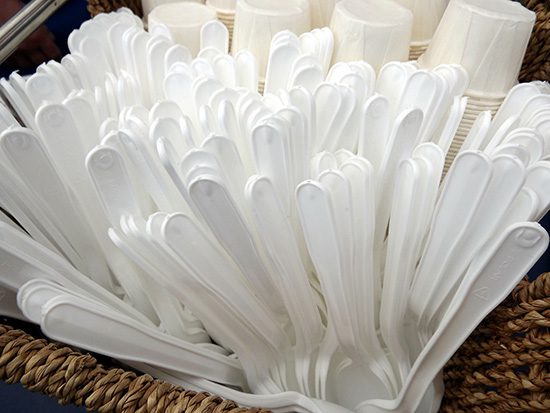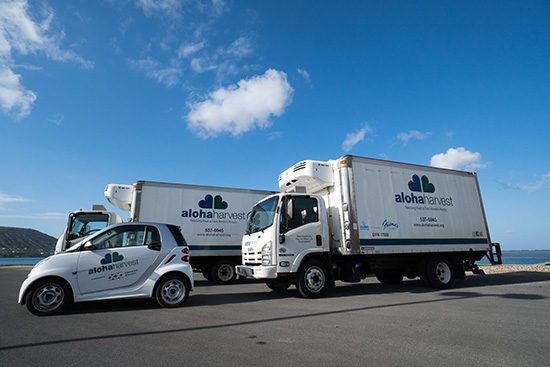
… with Christian Palmer
Improving Campus Recycling
In this monthly column, anthropology instructor and faculty chair of the sustainability curriculum committee Christian Palmer shares with us the latest developments WCC is taking toward becoming a more sustainable campus.
Serious efforts to increase recycling in Hawai‘i only started relatively recently. The HI-5 program, which creates a 5 cents deposit on beverage containers in Hawai‘i that are redeemed when you recycle them, began in 2005. Curbside recycling and green waste collection across the entire City and County of Honolulu began in 2010.
Because we live on an island, there are real limits to landfill space. Hawai‘i’s geographic isolation also drives up the cost of recycling because recyclable materials need to be shipped away for processing. With curbside recycling in Hawai‘i, about half of recyclable materials were recycled last year, which still leaves a lot of room for improvement. In Hawai‘i, recyclable materials include number 1 and 2 plastics, corrugated cardboard and office paper.
In an August 2012 Hawai‘i Business article entitled “The Economics of Recycling in Hawai‘i,” Scott Cooney, adjunct professor of sustainability at UH Mānoa’s Shidler College of Business, reported that many things that can be recycled elsewhere just don’t make financial sense in Hawai‘i where they need to be shipped to Asia or the mainland. Junk mail, phone books and plastics numbers 3 to 7 are all better off being burned in H-Power, a power plant that burns trash to generate electricity.
Other bulk recyclables like paper, cardboard and plastics are taken to Campbell Industrial Park where they are sorted, bundled in 900 pound bales and then shipped overseas. While not super lucrative, these shipments are considerably better in environmental terms than mining new raw aluminum or harvesting forests for paper. And they do pay for the state recycling programs in Hawai‘i.
Within Hawai‘i, glass is recycled by Grace Pacific to make glassphalt for fixing roads. Green waste is processed by Menehune Magic to produce compost. Eventually more of Hawai‘i’s waste should be processed in Hawai‘i, which creates jobs and can stimulate local economic development.
Here at Windward Community College, the Students Sustainability Hui has been working over the last semester to improve recycling. A survey of students, faculty and staff found that while about 84 percent of people at WCC knew where to recycle cans and bottles, only 56 percent knew where to recycle paper and even fewer, around 20 percent, knew where to recycle cardboard. Because there is paper and cardboard recycling on campus, the Sustainability Hui decided to create an education campaign to increase knowledge about recycling on campus.
The first step was to analyze the current recycling on campus and then come up with strategies for improvements. The students walked around campus and mapped the locations of recycling bins and trashcans. The Hui analyzed the map and found that the recycling bins are unevenly spread around campus and not always next to trash cans. The students then formulated a plan to improve recycling, which includes the following suggestions:
– Increase the amount of recycling bins in the most high traffic areas.
– Distribute the recycling bins around all the buildings, making sure that they are at all of the exits and next to all the outdoor trash cans.
– Expand paper recycling to make sure there is a recycling tray next to each printer across campus.
– Create an educational campaign with posters, signs and emails to inform the WCC community about recycling on campus.
The plan was approved by the newly formed Campus Sustainability Committee and will be implemented this semester.
Here is some basic information you need to know about recycling on campus.
– Bottles and cans should be emptied and put in the nearest recycling bins, located next to the exits of every building.
– Please do not throw any recyclable in classroom trash cans.
– Paper recycling bins will be located next to the printers on campus. Once these boxes are full, they can be emptied in a large recycling dumpster behind Hale ‘Ākoakoa.
– Cardboard should be folded and placed next to the trashcans or taken to the same recycling dumpster behind Hale `Ākoakoa.





